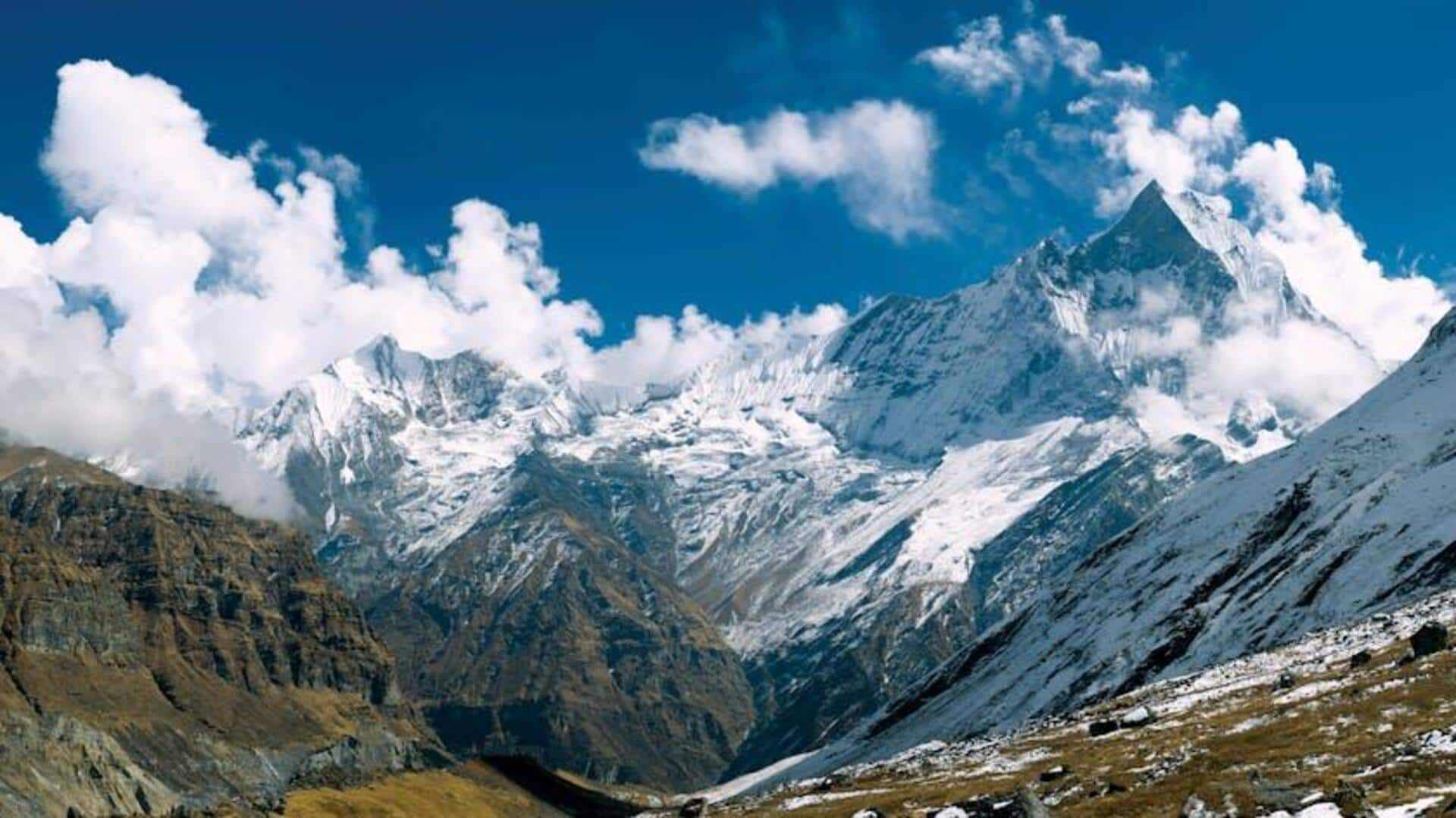
Trekking the majestic Kanchenjunga, Nepal: A journey of discovery
What's the story
Kanchenjunga, located in the eastern part of Nepal, stands as the world's third-highest mountain. This remote and stunning area offers trekkers an unparalleled adventure through diverse landscapes, from lush rhododendron forests to high alpine terrain. The trek to Kanchenjunga is less crowded than other Himalayan treks, providing a serene and authentic experience of Nepal's natural beauty and cultural richness.
Getting started
Planning your trek: Permits and preparation
To embark on your Kanchenjunga journey, first obtain a Restricted Area Permit from a registered trekking agency in Kathmandu or Pokhara. The trek mandates groups of at least two with a licensed guide. Adequate physical preparation is vital for this demanding adventure. Incorporate months of cardio and strength training into your routine to significantly enhance your trekking experience.
Cultural immersion
Embracing local culture: Homestays and villages
Trekking Kanchenjunga enriches with unique homestays, allowing trekkers to deeply immerse in Nepali culture while supporting local communities. As travelers journey through villages like Ghunsa and Kambachen, they're encouraged to interact with locals, learn about their traditions, and enjoy traditional Nepali meals prepared by hosts. This cultural immersion adds a profound dimension to the trek's physical challenge, enhancing the overall experience.
Nature's bounty
Witnessing flora and fauna: Biodiversity hotspots
The Kanchenjunga Conservation Area, a biodiversity hotspot, offers trekkers a chance to see rare flora and fauna. As you ascend through varied ecological zones, look for exotic birds, red pandas, and snow leopards in vibrant rhododendron forests during spring. This area's conservation efforts provide travelers with an intimate view of Nepal's rich biodiversity, making the trek an enriching experience.
High altitude adventure
Conquering high passes: Challenges and triumphs
Trekking Kanchenjunga involves crossing high passes like Sele La (4,290 meters), offering challenges and achievements. Itineraries include acclimatization days to mitigate altitude sickness. These passes provide views of Everest and other peaks on clear days, making efforts worthwhile. Trekking here means embracing cultures, appreciating nature's wonders, and overcoming challenges, leaving lasting impressions after descending from its heights.